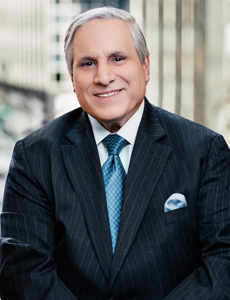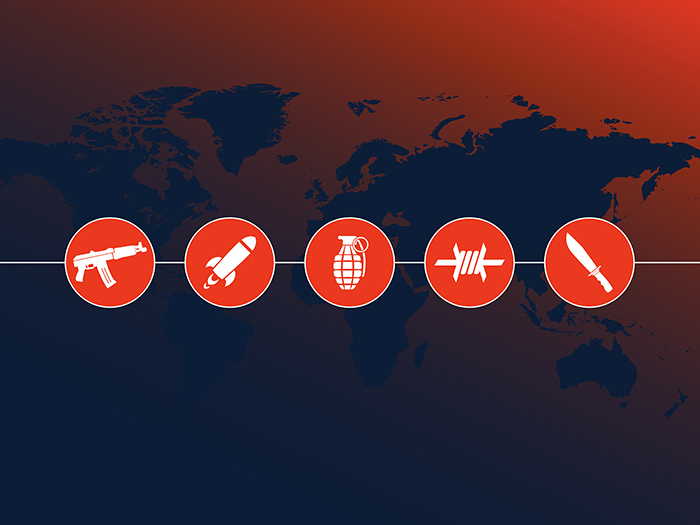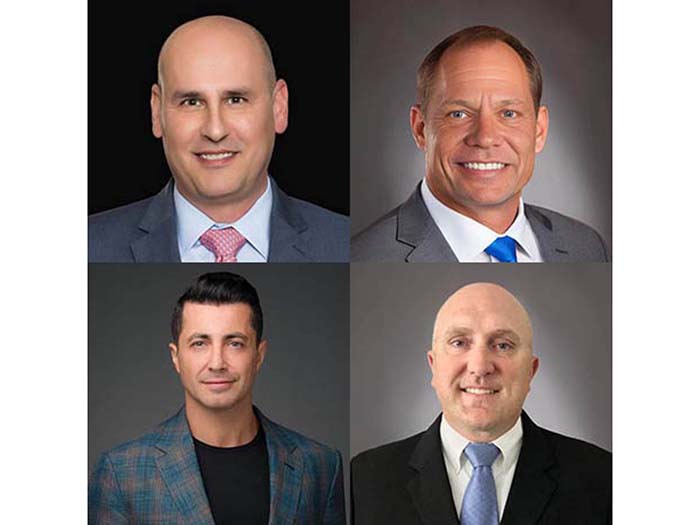Supply Chain Risks
Third-Party Reputational Risk

Companies are increasingly concerned that third-party partners could be subject to bribery and corruption – which could then come back to haunt the organization in more ways than one.
Joseph Spinelli, senior managing director at Kroll, said that the vast majority of regulatory actions alleging corruption brought by the U.S. Department of Justice and the Securities and Exchange Commission usually involve third parties.
And in many of those cases, global organizations had not sufficiently vetted their third parties.

Joseph Spinelli, senior managing director, Kroll
“It’s interesting – no matter where I go, no matter who I speak with, chief compliance officers especially, I ask them what’s the one thing that keeps you up at night, and they all say “third party risk’,” Spinelli said.
“That includes suppliers, distributors, joint venture partners, agents – any type of third party.”
Compliance officials see reputational risks posed by third parties as their top risk, according to Kroll’s recently released “2017 Anti-Bribery & Corruption Benchmarking Report” in conjunction with the Ethisphere Institute.
In 2016, that risk was No. 7 on the list, said Steven Bock, managing director and head of operations and research with Kroll’s compliance practice.
“With media scrutiny providing instant information, corporate entities are looked at not solely for what they do, but also what they do with their affiliations with regards to human trafficking, illegal child labor – whatever the risk issues may be,” Bock said.
Plus, more than one-third (35 percent) of the respondents expect their risks from bribery and corruption to increase, while 57 percent expect the level of risk to remain the same as last year.
Top risks are expected from third party violations (40 percent), a complex global regulatory environment (14 percent), and employees making improper payments (12 percent).
According to the report, 40 percent of the respondents had more than 1,000 third parties and 29 percent had more than 5,000.
Spinelli said that global organizations need to risk-rank third parties into categories of high, medium, and low risk.
“For those third parties that fall into the high-risk category, it’s incumbent for global organizations to ensure enhanced due diligence is conducted,” Spinelli said. “This will require actual boots on the ground, with people who can speak the language, know the culture, and can ascertain all the relevant information.”

Steven Bock, managing director and head of operations and research, Kroll compliance practice
Kroll recommends that compliance officials employ a tiered screening program for third parties. If issues turn up on an initial screening, a company can then “dig deeper” to determine levels of concern, similar to a system that uses green, amber and red light symbols as triggers.
“If the third party answers truthfully and there are no issues, then it’s a green light to proceed further,” Bock said.
“If it’s amber, the company can decide whether it should proceed, and a red light would cause the company to make an immediate stop and not proceed any further without a more costly and detailed due diligence effort to understand whether the initial questions are as problematic as they seem on face value.”
The report also highlighted the importance of monitoring third parties after initial screening. More than half (55 percent) of the respondents discovered a problem with their third party’s qualifications or associations, after an initial screening.
Respondents attributed that to many factors, including misconduct that arose subsequent to the time of initial on-boarding, non-compliant behavior that was concealed or not disclosed by third parties, and red flags not discovered because of inadequate initial screening.
“I think we’ve gotten a clear message from these respondents that, from their perspective, monitoring is now a key component to an overall comprehensive and successful due diligence program,” Bock said.
Companies must also consider the third-party firm’s reputation, it’s relationship with foreign officials – and the company’s actual business rationale for using that company, he said.
According to the report, however, nearly half (49 percent) of the respondents said they did not have enough resources to support anti-corruption efforts, and one-third had a greater level of concern about personal liability than they had the prior year.
Many of the surveyed compliance officers noted they were receiving support from their chief financial officers and finance teams.
“This is not surprising, as the chief financial officer and the finance team often have insight into the operations of multinational enterprises through their dealings with complex cross-border accounting controls and awareness of customs regarding local payment terms,” the report’s authors wrote.
Third parties must understand “there’s a zero tolerance for bribery and corruption when doing business on the organization’s behalf.” – Joseph Spinelli, senior managing director, Kroll
Respondents were also stepping up the compliance expertise and activities of board members as a result of increasing regulatory expectations by the DOJ, according to the report.
The engagement of senior leadership in anti-bribery and corruption efforts is on the rise, with more than half (51 percent) of respondents saying that senior leadership at their organization is “highly engaged,” a 4 percentage point increase over what respondents said in last year’s survey.
Third parties must understand “there’s a zero tolerance for bribery and corruption when doing business on the organization’s behalf,” Spinelli said.
Contractual arrangements are a big part of that, he said, and should specifically describe expected duties, performance of duties, payment terms and audit rights, he said. In addition, third parties should be trained periodically on – and certify that they understand – the anti-bribery and corruption compliance program, which is now mandated by the DOJ.
“Global organizations should know that the third party is actually performing the work, and what compensation the third party is receiving for that work.”










